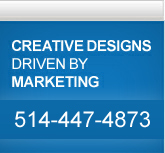There are six universal attributes
of a great Logo Design:
Is it practical?
Can it be printed on scalable sizes without being fuzzy? Will
it work in black and white format as well as in color? Some logos
designs become incomprehensible when
reproduced in newspaper ads or when sent through a fax machine.
Try blowing it up and reducing the logo to determine its readability
at different sizes. Also keep in mind that something like 10 million
American men and a few women are at least partially color blind.
Color does make a difference. (View our Psychology
of Color section)
Is it distinctive?
A logo design needs to be unique and effective, simplicity is
key. A design idea doesn't
need to be unique to the world, just distinctive enough so you
can market your target audience.
Is it graphic?
You shouldn't have to explain to people what message you are portraying
in your logo design. An effective logo design will communicate
purely in graphic terms to the right brain hemisphere, and doesn't
depend on verbal intellectual interpretation. This is equally
true for all logo designs, whether an iconic logotype, a wordmark
or even a simple lettermark. The choice of fonts, shape and color
should effectively communicate the essence of the company.
Is it appropriate?
Is the design relevant to your business? Is it consistent with
the personality and tone you wish to convey about your business?
The content has to be right! An otherwise great logo
will fail if the message expressed is at odds with management
intentions.
Is it simple?
Simplicity of design makes a logo easier for customers to remember
and recognize. A
great logo will contain only one graphic idea, one gimmick, one
dingbat. Thus if there's a symbol, the accompanying name should
be plain and unadorned. If it is a wordmark, one idea or device
should make it special -- like the stripes in IBM. The more unique
the name,
the simpler the graphics can be. Think clear contrast and simple
shapes, with limited
colors and tones.
Does it convey ONE message?
Great designs try to express no more than one attribute and support
a single aspect of positioning.
Get opinions from colleagues and from people in your target market
instead of merely relying on your own intuition and taste. Also,
use this checklist to avoid common problems with logos:
Is it too trendy?
Think of the future and avoid being too trendy. A good logo will
last your company 15 years and give your customers a chance to
burn the image of your logo into their brains.
If the logo uses words or letters, are they recognizable?
You shouldn't have to explain or decipher the logo for people.
Does it arouse any unwanted associations?
What you intended as stepping stones might come across to others
as looking like animal droppings. If you get this kind of honest
feedback, pay attention.
Are the colors appropriate?
Colors are powerful. Different colors have different associates
and can have predictable effects on your audience. Understanding
color associations is imperative!
Do you and others in your company like the logo enough to use
it enthusiastically?
If not, return to the drawing board.
|

